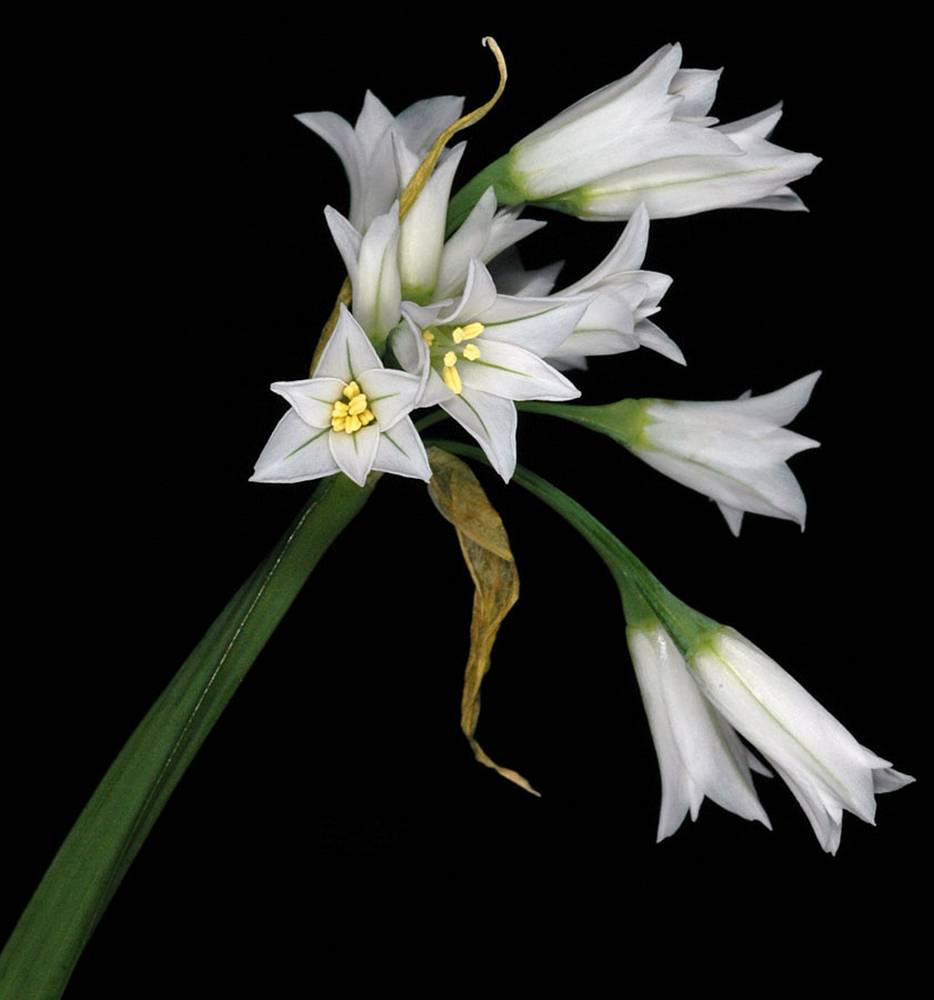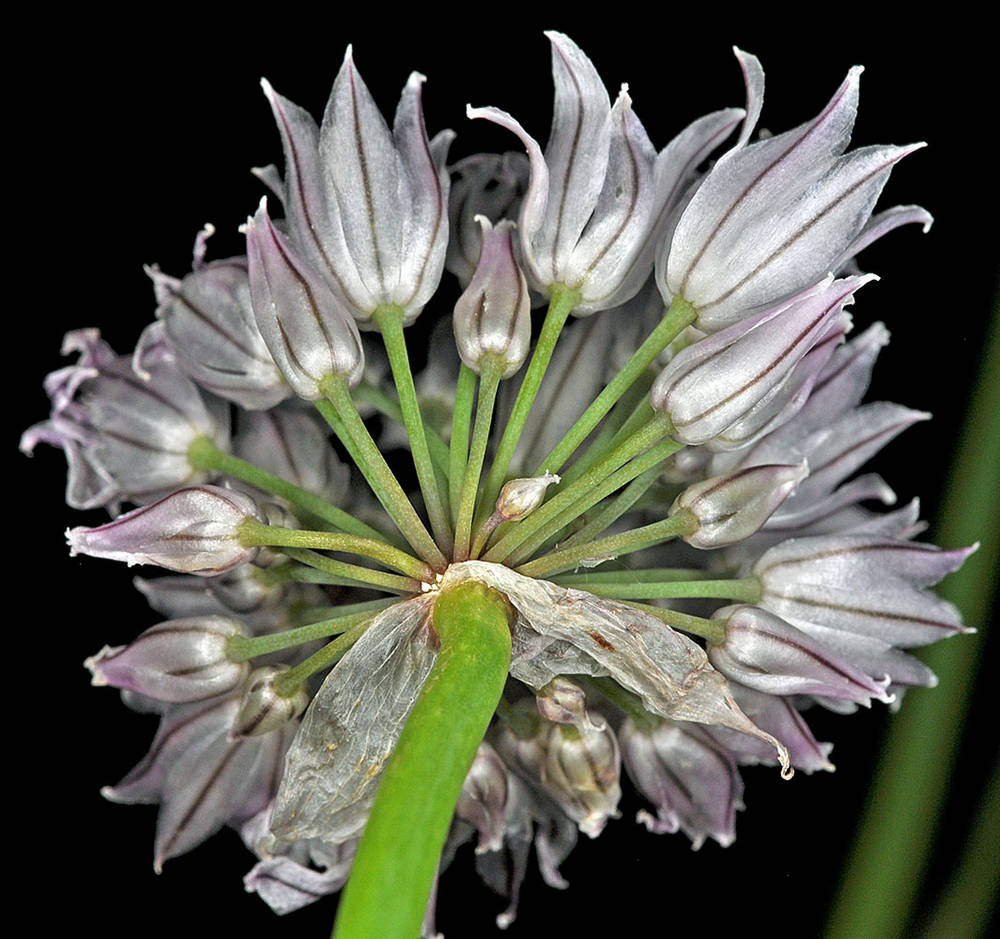Allium triquetrum
Allium schoenoprasum
three-corner leek
chives
5–20+; increase bulbs absent or more or less equaling parent bulbs, never appearing as basal cluster; ovoid;
outer coats enclosing renewal bulbs; more or less translucent, obscurely cellular-reticulate; thin, membranous; meshes delicate;
cells vertically elongate, contorted; without fibers.
1 or more, clustered; short-rhizomatous at base, cylindric, elongate;
outer coats enclosing bulbs, persisting as fibrous reticulum but often appearing membranous because outer coats are often not collected;
cells minutely striate.
persistent, green at anthesis, 2–3;
blades solid; flat, not falcate; more or less keeled, 15–50 cm × 3–15 mm;
margins entire.
persistent, green at anthesis, usually 2;
blades hollow; terete, 20–60 cm × 2–7 mm.
persistent, clustered; erect; solid, sharply 3-angled, 10–40 cm × 1–10 mm.
persistent, 2–12+, clustered; erect; terete; hollow, 20–50 cm × 3–5 mm.
persistent; lax; loose, 3–15-flowered; more or less 1-sided;
pedicels 15–25 mm;
spathe bracts 1–2.
persistent; erect; compact, 30–50-flowered; more or less subglobose;
pedicels 2–6 mm;
spathe bracts 2.
becoming pendent, 10–18 mm;
tepals erect to spreading, lanceolate; more or less equal, white with prominent green midrib;
margins entire;
apex acute;
stamens included;
ovary crestless;
stigma scarcely thickened, unlobed.
8–12 mm;
tepals erect, elliptic to lanceolate; more or less equal, pale purple to deep lilac, drying pink, or white, permanently enclosing capsule;
margins entire;
apex acute to acuminate;
tips more or less recurved; midribs not thickened;
stamens included;
ovary crestless;
stigma unlobed or obscurely lobed.
=18.
=16.
Allium triquetrum
Allium schoenoprasum
Road ditches, lawns, and other disturbed moist sites. Flowering Apr–Jul. 400–2800 m. BR, BW, Col, ECas, Lava, Owy. CA; Europe. Exotic.
Allium triquetrum is cultivated for its attractive flowers. It readily escapes in south coastal Oregon and California and has potential to become invasive.
Wet meadows, rocky or gravelly stream banks and lake shores. Flowering May–Aug. 50–200 m. Col, WV. WA; circumboreal. Exotic?
Allium schoenoprasum is native to parts of North America. Its native range is unknown because of the difficulty of distinguishing native from introduced populations. The few Oregon populations are probably introduced.
Nick Otting, Richard Brainerd, Barbara Wilson
Nick Otting, Richard Brainerd, Barbara Wilson
- Local floras:
BC,
OR,
WA
- Local Web sites:
Flora NW,
PNW Herbaria
WildflowerSearch
iNaturalist (observations)
USDA Plants Database
- LBJ Wildflower Center
- SEINet
- Plants of the World Online
- Encyclopedia of Life
- Wikipedia
- Google Image Search





